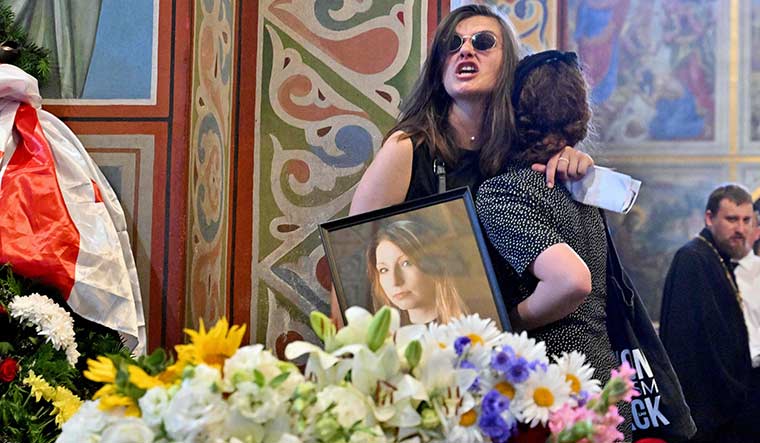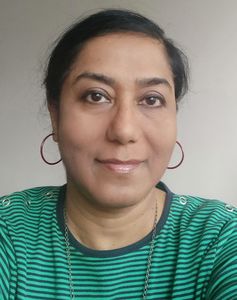AN OLD LATIN adage says, “Si vis pacem, para bellum (If you want peace, prepare for war).
Even during those fateful days of June 2023, when the world held its breath to watch the Wagner private military company’s short-lived mutiny against the Vladimir Putin-led Russian government— heavy fighting along the frontlines as well as drone and missile attacks all over Ukraine never stopped. Like background noise behind the existence of everything living and thriving in Ukraine, coexistence of peace and war is surreal. Ukraine appeals for arms to protect its sovereignty and searches for peace. On June 24, an unannounced meeting of national security advisers of several countries and top Ukrainian officials was held in Danish capital Copenhagen to discuss the future prospects of peace in Ukraine.
A hush-hush summit, you may call it? Not this one alone. Recently, several secret meetings were revealed. Cardinal Matteo Zuppi, emissary of Pope Francis, travelled to Kyiv on June 5-6 and to Moscow. Around the same time, a secret trip by CIA director William Burns to Kyiv also signalled heightened backchannel negotiations. Earlier in April, Russian Foreign Minister Sergei Lavrov held talks with former US national security officials Richard Haass, Charles Kupchan and Thomas Graham. Secrecy is perennial in diplomacy, its level varies, pursuant to the decision-making style of countries.
In Ukraine, common people do not like such secrecy, as they bear the brunt of Russia’s aggression with their lives, possessions and health. The 1994 Budapest Memorandum and later many treaties with Russia and the fugitive Ukrainian president Yanukovych’s backing out from the association agreement with the European Union in 2013 are fresh in memory. Time and again since the 1990s, Ukrainians organised uprisings—1990 Granite Revolution, 2004 Orange Revolution and 2013-14 Revolution of Dignity, forcing the government to reverse decisions and act responsibly. Today, the war’s irreversible trauma on the mental map of Ukrainians, rapid flow of information, presence of the media and civil society watchdogs shape the action of politicians, demanding accountability at each and every step. Ukraine’s policies cannot be agreed on secretly and imposed on its people anymore. In fact, this vox populi has enabled leaders to be unequivocal about no mediation on territorial issues and to agree to exchange of prisoners and the deported and negotiations only when “conditions are ripe”.
To avoid all kinds of speculation, Andriy Yermak, head of the office of the president of Ukraine, shared many nuances of the secret Copenhagen summit in a frank conversation with journalists. Peace is like fresh air for Ukraine, suffocated by 15 months of war. Who needs more peace than the Ukrainians? But what kind of peace? The vision matters. Peace should be stable and meaningful. After failures of Minsk, Normandy and 180 more rounds of bilateral talks with Russia, Ukrainians are convinced of their futility. Yermak was clear about the fact that the blueprint for all talks is President Volodymyr Zelensky’s comprehensive 10-point peace plan, first announced at the November 2022 summit of G20 nations in Bali, Indonesia.
The first point in the plan is radiation and nuclear safety, focusing on Europe’s largest nuclear power plant—Zaporizhzhia in Ukraine, which is now occupied and controlled by Russia. Rumours are rampant that Russia has mined the plant, and Ukrainians are panicky, after the Chernobyl disaster of 1986, like a burnt child who dreads the fire. Other points of the plan are energy and food security, release of prisoners of war, return of adults and children forcibly deported to Russia, implementation of the UN Charter and restoration of territorial integrity, withdrawal of Russian troops, end of hostilities, justice and reparations, counteracting ecocide, focused on demining and restoring water treatment facilities. Many of these issues touch majority of the countries of the world.
Since its announcement, Zelensky actively looked for a global summit to discuss all or part of his plan. Yermak confirmed that the Copenhagen meet was the first successful step in that direction. He was happy that apart from the G7 and most of the European countries, Brazil, India, Saudi Arabia and South Africa were present. He expects a continuation, with some 50 countries already supporting this initiative. Most nations voted in favour at the UN General Assembly resolutions on Ukraine, but some abstained. Copenhagen was a platform to get them together. Yermak thinks that the myth around Russia’s strength, credibility and image is busted, revealing political, strategic and military vulnerabilities. This will bring more countries along. More representatives of the Global South have seen the devastation with their own eyes in Ukraine and are aware of the imperialist nature of Russia’s policies. Yermak hopes another summit will be held before the end of 2023 and it might be in one of the countries of the Global South.
Prior to this summit, Yermak disclosed that he had meetings on the ambassadorial level, where China participated. But in Copenhagen, China was invited but did not attend; Russia was not invited. Especially to be noted is India’s presence. Unlike the Holy See or the African leaders, India did not send peace envoys to Ukraine or Russia for mediation, although Prime Minister Narendra Modi openly told Putin at the Shanghai Cooperation Organisation summit in Samarkand, “This is not an era of war.” India did not openly condemn Russian aggression, instead there were high-level telephone talks and later meetings on the sidelines of the G7 summit between Zelensky and Modi in Hiroshima. Responding to my question, Yermak warmly recalled each positive feedback and word of support during his telephone talks with his Indian counterpart, National Security Adviser Ajit Doval, and pinned a lot of hope for potential cooperation with India. By the way, India was represented in Copenhagen by Sanjay Verma, secretary (west) in the ministry of external affairs, whose visit to Kyiv at the time of writing this column might break new ground. Foreign ministry officials confirmed that political consultations would be renewed between India and Ukraine after 11 years.
Not all may agree with the whole peace formula, especially the justice, tribunal and reparation issues, but overall, the 10-point plan today is a shared global vision. While support to Ukraine mostly comes from the west, the Copenhagen meet showed that Ukraine is no longer a western issue, but a multilateral one, giving Ukraine the due agency and representation. Russia’s proposal for ceasefire and talks hinge on acknowledging the parts of Ukraine it occupied as “new reality”. But, such “new normal” are totally out of the table. Here lies the significance of the Copenhagen summit. The crucial problem though is that Russia is not in this peace platform yet, so it continues unabated missile strikes on Ukraine.
Thus, to enable Ukraine’s win, the NATO moment has arrived. The Vilnius summit agreed on Ukraine’s fast-track entry but the timing is debated. Also, considering David Ukraine’s dependence on its allies on the quantity and type of weapons to fight Goliath Russia, Ukraine’s Commander-in-Chief Valery Zaluzhny did not mince words in an interview demanding more weapons: “It is not a show the whole world is watching and betting on or anything. Every day, for every metre, blood is shed.” Fighters die. Civilians, too. Hundreds are injured. Among them, Ukrainians and foreigners. In the past week alone, 13 civilians died in Kramatorsk, including my acquaintance, award-winning Ukrainian writer Victoria Amelina. Among the injured are Colombians: writer Hector Abad Faciolince, peace commissioner Sergio Jaramillo and journalist Catalina Gomez. Another missile strike took the lives of 10 in Lviv, six more in Mykolayiv. Fighting a deadly war, Ukraine has to fight for and shape the peace it wants, leaving no stone unturned. Indeed, this is a tightrope walk of its destiny.
Mridula Ghosh, formerly with the UN, now teaches at the National University of Kyiv-Mohyla Academy, and also leads an NGO.




